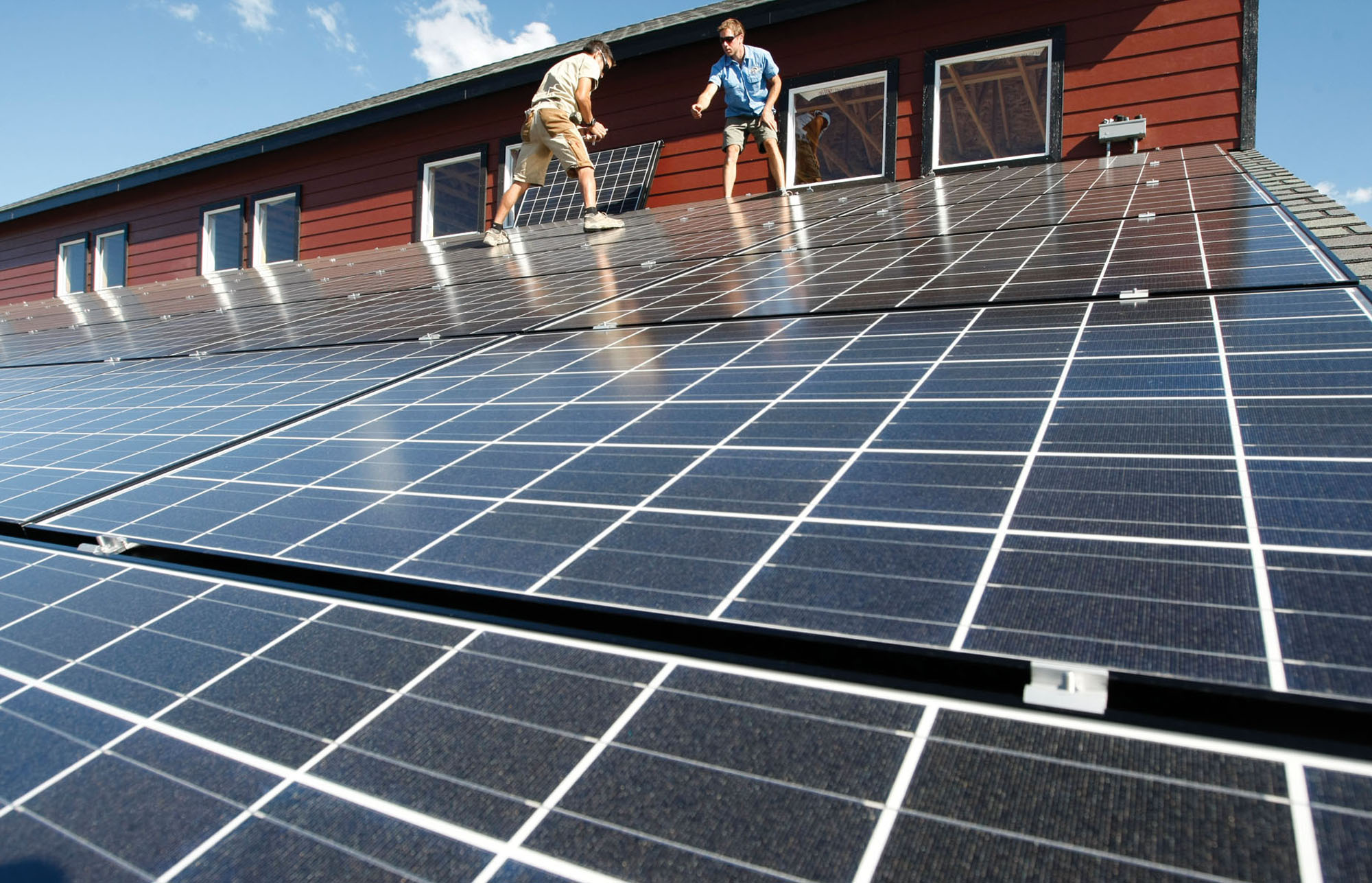
Colorado’s solar industry has seen a lot of ups and downs. Jokingly referred to as the “solarcoaster,” the industry surged to new heights under a 2004 state renewable energy standard, and then temporarily lurched downward as the economy and state utility regulators proposed change.
So how does Republican President-elect Donald Trump fit into the picture?
Trump called global warming a hoax during his campaign. He criticized wind and solar power as “so expensive.” He unsuccessfully mounted a campaign to stop windmills from being built offshore from his Scottish golf resort.
Blake Jones, co-founder of Colorado-based Namaste Solar pointed out that everyone was very concerned at the onset. He said that “the initial perspectives were, ‘Our movement is in trouble,’” because Trump’s campaign was largely based on bolstering fossil fuels like oil, gas and coal. So you’d be surprised to hear what Jones had to say next.
“Over time I think as the dust settled, as we thought about things, as we read different perspectives… for solar and renewables, I’m quite optimistic,” Jones said.

When it comes to solar, policy set by state — not the federal government — matters a lot. One of the biggest drivers of growth in Colorado has been the state’s aforementioned renewable energy standard. Today, that goal requires investor-owned utilities to use 30 percent renewable energy by 2020.
“The solar industry as we know it here in Colorado — and Namaste as individual company — would not exist if it weren’t for Colorado’s renewable energy standard,” Jones said.
Since state policy matters when it comes to nurturing growth for the solar industry, Colorado advocates are hopeful that a Trump presidency, with its negative opinions about renewables, may not matter that much when it comes to the industry’s future.
Renewables Come Into Their Own
Across the country, 60 percent of growth in renewable electricity generation since 2000 has been connected with renewable portfolio standards found in 29 states.
“In the Northeast or the Western U.S., you look at the pattern of growth in renewable energy and it pretty much mirrors the requirements that these policies put in place,” said Research Scientist Galen Barbose at the California-based Lawrence Berkeley National Lab.
Barbose said the remaining growth is driven by factors that include voluntary purchases of wind and solar and federal tax credits. Those credits, extended by Congress in 2015, are something a Trump administration and a Republican-controlled House and Senate could reverse. That could have a tremendous negative impact on industry growth.
Another factor, thanks to market forces, is a seemingly unstoppable one: Solar and wind are getting cheaper and more competitive with fossil fuels. Barbose points out that you see more and more utilities across the nation buying renewable energy "purely on economic grounds or as a hedge against volatile natural gas prices."
Renewables accounted for 64 percent of all electricity generating capacity added to the U.S. in 2015. Natural gas made up most of the rest. Up until now, wind had been the dominant renewable, but solar is gaining steam. Utilities are building more large scale solar farms. The lower price of solar is also attracting more individual consumers.
State Policy For Utilities Matters, Too
California-based SolarCity has rapidly expanded over the last decade to appeal to customers in 19 states, including Colorado. The company is betting big on a recent merger with another Elon Musk-related company, Tesla. SolarCity wants to give even more choices to individual consumers, more specifically batteries which eventually get paired with solar panels.
Again, it’s here that state — not federal — policy really matters. Take Nevada. In 2015, a shift by the state’s Public Utilities Commission reduced incentives consumers got when selling power back to utility companies. That change to a policy, called net-metering, hit SolarCity and other Nevada companies hard.
“The result was that overnight a growing industry was shut down. SolarCity alone was forced to let go of 500 employees,” said Will Craven, director of policy at SolarCity.
Nevada later grandfathered in 32,000 customers to have more favorable rates. But growth has slowed down significantly. A similar debate now looms in Utah.
Colorado hasn’t seen any dramatic shifts in utility-level policy yet, although a proposed change by Xcel Energy did draw ire from solar supporters before it was changed.
Namaste Solar’s Blake Jones said the day is coming when solar and renewables won’t even need rebates or tax credits. Take state-level incentives. Offered by utilities, they were once considered critical for Colorado companies. Now, “state-level subsidies for solar are almost down to zero,” Jones said.
As solar’s cost continues to drop, it could soon cost at or below what customers pay for conventional electricity sources assuming growth and policies continue on their current trajectory.
“At the end of day, Trump is a business man. And he understands business,” Jones said. ”When you look at solar and wind, in essence, I think this is the biggest economic opportunity of the 21st century.”









